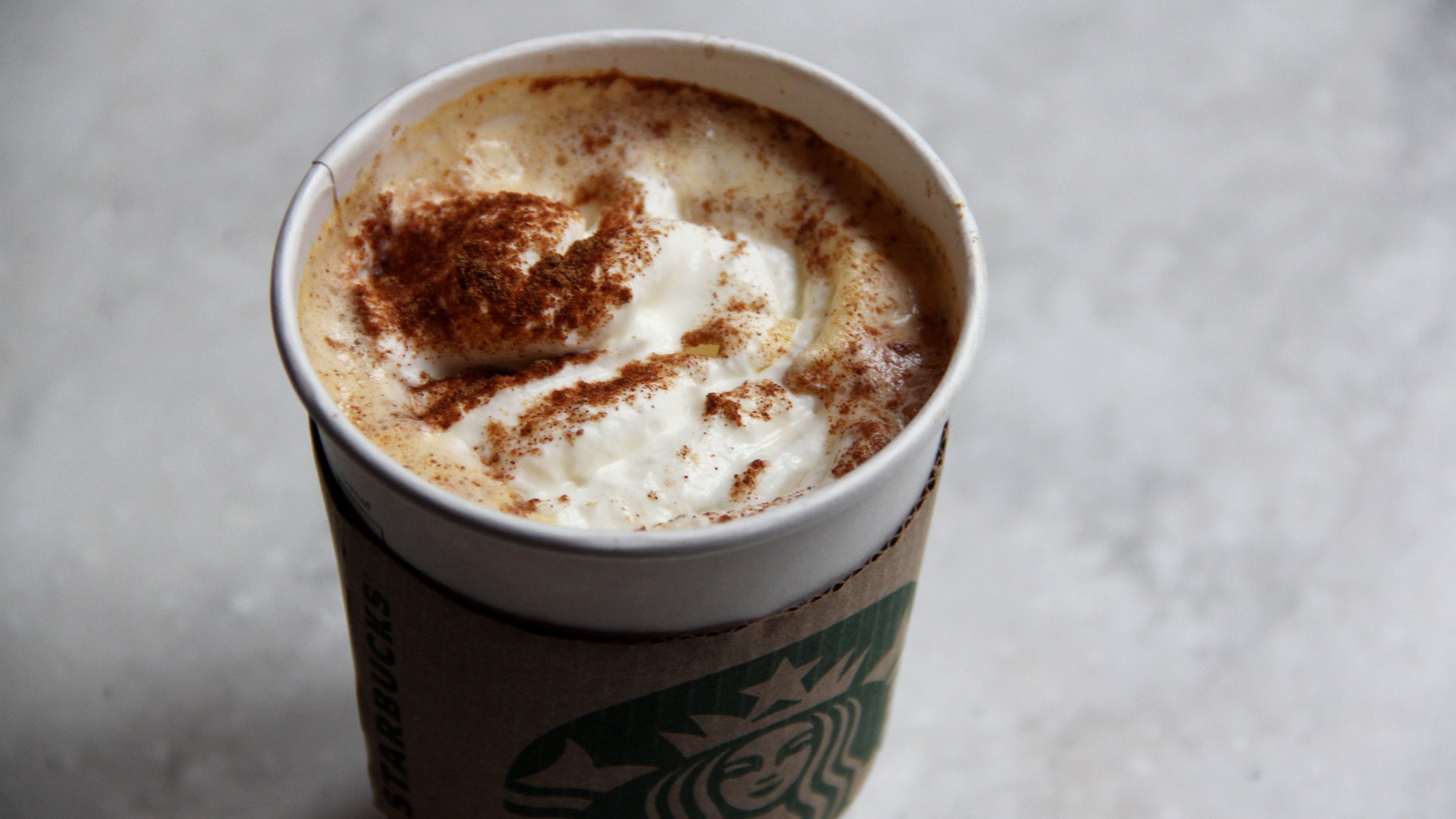The Pumpkin Spice Latte war
Listen
Starbucks has sold hundreds of millions of Pumpkin Spice Lattes since their introduction in 2003. (Emma Lee/WHYY)
Is the seasonal favorite “PSL” heaven (or hell) in a cup? Depends who you ask.
It is perhaps the most divisive liquid of the past decade.
Starbucks’ Pumpkin Spice Latte, affectionately branded the “PSL,” is the Seattle-based chain’s most successful seasonal offering, with more than 200 million sold since its launch in 2003. (To some, it is the very definition of “basic,” a term that if you haven’t heard of, you are likely guilty of being.)
Each fall, devoted PSL drinkers cue up for the candy-like beverage that contains no actual pumpkin. This season, though, some fans have gone tepid over concerns of chemical additives first brought to light by Vani Hari, a blogger better known as the Food Babe.
Hari, a former management consultant with no food science background, has built a following online for her campaigns against hidden ingredients in processed foods. After obtaining the Starbucks ingredient list for the PSL, she publicly called on the company to remove its caramel coloring additive.
“Seeing that a coffee drink that is in an opaque cup, like a pumpkin spice latte, is colored with this ammonia based artificial food dye, it doesn’t make a lot of sense to me. And it is also very alarming that they are putting this chemical in my drink,” says Hari.
Chemicals: Friend or foe?
The specific chemical of concern to Hari is a compound called 4-Methylimidazole, abbreviated as 4-MEI.
We’ll get back to 4-MEI in a minute, but first, it’s worth laying a foundation for what a chemical actually is.
“Everything we eat is a chemical, whether it be the sugar that we add to the food, or the salt we add to our food, or the fats that make bacon taste so delicious,” says Professor John Hayes, a food scientist at Penn State University.
“So this idea that chemicals are somehow inherently scary and just putting the word ‘chemical’ on something to make it a scary additive, really just plays on the ignorance of the American public and the lack of science education we have”
I asked Hayes to measure that ignorance—put it on a scale of 1 to 10. How little do we as eaters actually understand the science behind what we eat?
“Maybe a two,” he said.
Hayes, by the way, is not a ten, by his own admission. His area of research is human flavor perception, not the relative safety or risk of specific chemicals. But he is familiar with another ingredient that Food Babe wants removed from the pumpkin spice latte: its called carrageenan.
“Right, so carrageenan is an extract that comes from seaweed. It is commonly found in a lot of food products because it is used to stabilize them and improve the texture,” says Hayes.
Some doctors and scientists say this seaweed extract can lead to serious intestinal problems.
The FDA says otherwise, and still permits its use.
As for 4-MEI, it too has been at the center of controversy.
Dosage size matters
Actually, 4-MEI is not an additive. It instead arises as a byproduct of the heating process.
“Anything that has both sugars and proteins, which is really most of what we eat, when we expose it to high heat, when we brown them, you get a huge cascade of reactions that produce a number of volatile compounds,” says assistant professor of food science Jacob Lahne, of Drexel University.
Throw a steak on the grill, and it could create 4-MEI as it cooks; roasting coffee beans, too, can produce it. Certain classes of caramel coloring contain it, including varieties found in many soft drinks. It’s safety remains a topic of debate.
A 2007 study by the National Toxicology Program found that long-term exposure to 4-MEI led to lung tumors in some mice. (Male rats, however didn’t suffer the same fate.)
The FDA disputes the findings of the report, and says the amount of the chemical given to mice in the experiment was the equivalent of a human being drinking 1,000 sodas per day. In July, it said it continues to review all available data.
Jacob Lahne says regardless of any one study, people have a right to ask questions about 4-MEI and whatever else is in their food.
“I think often, concern is warranted, but hysteria isn’t.”
Vani Hari, the Food Babe, says she will continue to pressure Starbucks to remove the chemical from its drinks, including the PSL.
“They have been getting away without being transparent for a very, very long time,” says Hari.
WHYY is your source for fact-based, in-depth journalism and information. As a nonprofit organization, we rely on financial support from readers like you. Please give today.



